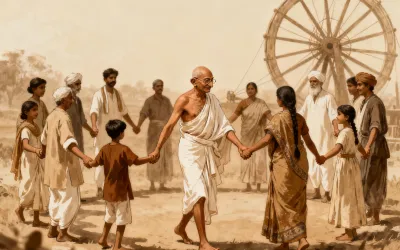A member of SC Times Writers Group, namely Karen Cyson, claimed that Easter is the appropriation of celebration of the ancient spring fertility festival honouring the goddess Eostre (Ostara, Oestera). In an article titled 'Traditions of Easter and cultural appropriation of Eostre', Karen Cyson wrote, "This celebration, of pagan origin, pays tribute to the renewal of the Earth, the rebirth of life after the dead of winter. Eostre is the pagan fertility goddess of humans and crops. The traditional colors of the festival are green, yellow and purple. The symbols used are hares and eggs, representing fertility (because we all know that bunnies breed like, well, rabbits) and new life."
According to Karen Cyson, people in the pre-Christian era who were called Pagans by Christians believed that Eostre mated with the solar god of the spring equinox and, nine months later, at Yule/winter solstice, gave birth to a man/God child. Karen Cyson further wrote that the subject of fertility and new life and its relationship to Eostre could be found throughout many cultures. Coloured eggs have been associated with the spring celebration since at least 580 BCE in Persia. In Ukraine, Pysanka eggs historically honoured the sun god father of Eostre's child until Christianity came to Ukraine.
Karen Cyson further claimed that Eostre is the namesake of the female fertility hormone estrogen. Christianity has appropriated her name and festival rituals for the church's rebirth-after-death story. She further wrote, "I have had Christians become quite upset when I have mentioned that many of the Easter symbols and rituals, they hold dear have been co-opted from ancient pagan fertility rites. Brightly coloured eggs, egg hunts themselves, bunnies as bearers of said eggs, the colours, the stories of rebirth after the dead of winter — all are taken from Eostre legends and rituals."
Karen Cyson wrote, "In reality, Christianity should be embarrassed that it has needed to embellish its Easter tradition by appropriating pagan symbols and rituals for its own use. The bunny is not for Easter; it is for Eostre. The eggs are not part of Easter; they are symbols of Eostre. Really the only symbol of Eostre the Christian church has not appropriated for Easter is the dragon/serpent. I guess a dragon could not quite so easily be worked into their narrative."
In an article titled 'Why Easter is called Easter, and other little-known facts about the holiday', Brent Landau wrote,
"
The naming of the celebration as "Easter" seems to go back to the name of a pre-Christian goddess in England, Eostre, who was celebrated at the beginning of spring. The only reference to this goddess comes from the writings of the Venerable Bede, a British monk who lived in the late seventh and early eighth century. As religious studies scholar Bruce Forbes summarizes:
"Bede wrote that the month in which English Christians were celebrating the resurrection of Jesus had been called Eosturmonath in Old English, referring to a goddess named Eostre. And even though Christians had begun affirming the Christian meaning of the celebration, they continued to use the name of the goddess to designate the season."
Bede was so influential for later Christians that the name stuck, and hence Easter remains the name by which the English, Germans and Americans refer to the festival of Jesus' resurrection.
"
Controversy over the correct date for Easter
Easter does not have a set date and its time each year varies according to moon phases. Many countries around the world celebrate Easter according to their own traditions and religious beliefs.
Fixing the date on which the Resurrection of Jesus was to be observed and celebrated triggered a major controversy in early Christianity in which an Eastern and a Western position can be distinguished. The dispute, known as the Paschal controversies, was not definitively resolved until the 8th century. Some Christians observed the day of the Crucifixion on the same day that Jews celebrated the Passover offering—that is, on the 14th day of the first full moon of spring, 14 Nisan (see Jewish calendar). The Resurrection, then, was observed two days later, on 16 Nisan, regardless of the day of the week. In the West, the Resurrection of Jesus was celebrated on the first day of the week, Sunday, when Jesus had risen from the dead. Consequently, Easter was always celebrated on the first Sunday after the 14th day of the month of Nisan. Increasingly, the churches opted for the Sunday celebration, and the Quartodecimans ("14th day" proponents) remained a minority. Finally, the Council of Nicaea in 325 decreed that Easter should be observed on the first Sunday following the first full moon after the spring equinox (March 21). Catholic Easter, therefore, can fall on any Sunday between March 22 and April 25.
Eastern Orthodox churches use a slightly different calculation based on the Julian rather than the Gregorian calendar (which is 13 days ahead of the former), with the result that the Orthodox Easter celebration usually occurs later than that celebrated by Protestants and Roman Catholics. Moreover, the Orthodox tradition prohibits Easter from being celebrated before or at the same time as Passover. As a result, Orthodox Easter can fall anywhere between April 4 and May 8.
One can find major confusion over the celebration of prominent festival Easter. Moreover, a question also emerged why then Christians appropriate Pegan's traditions? Here, Pegan people were those in the Roman Empire who practised polytheism or ethnic religions other than Christianity and Judaism. As a result, they were called worshipers of false gods.











Comments
Add new comment